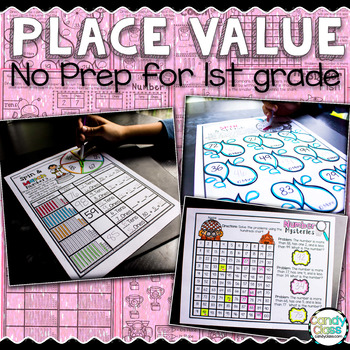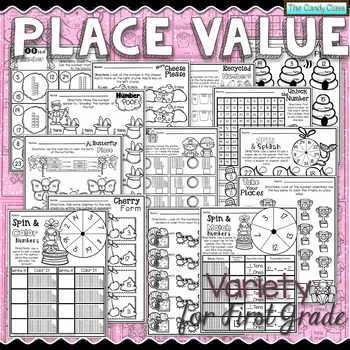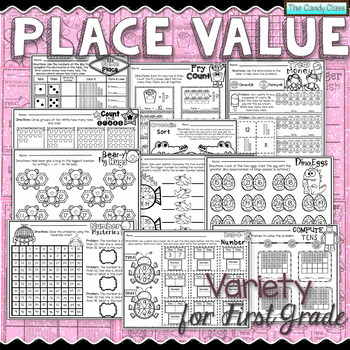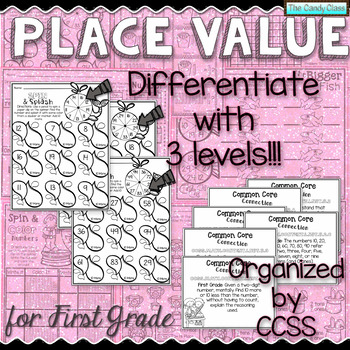No Prep Place Value Worksheets 1st Grade Math Centers Comparing Tens & Ones
- PDF
What educators are saying
Description
These no prep printables offer differentiation for place value, fun themes, playful titles and many engaging twists, yet it is still no prep and comprehensive! Not to mention, it is geared just for teaching this concept to first grade by covering tens and ones.
I did my homework on place value to make sure it was comprehensive. ;) It covers tens and ones, base ten blocks, problem solving, forming groups of ten, expanded form, greater than & less than, ordering numbers, and more! These no prep printables also include three levels for differentiating instruction. Additionally, this is geared just for first grade!
With these no prep worksheets, you can cover this concept in math centers, for morning work, for extra practice, homework, for whole group instruction, or however else you find handy. Simply print, and you are ready to teach!
The printables are organized by connecting common core standards. If you don't use the Common Core standards, these are still common concepts students need to master place value.
Includes 89 No Prep Printables:
•Tens and ones
•Base ten (block form)
•Place value of tens
•Problem solving
•Forming groups of tens
•Greater, Lesser, Equal Than
•Ordering numbers
• Expanded form
•10 More/10 Less
•3 Levels for most of the no prep printables for differentiating instruction
View the preview to check out most of this resource. Note, I only show one example from each differentiated sheet, and there are a few more sheets in there that I did not include in this preview.
Covers the Following First Grade Common Core Standards for Place Value:
CCSS.MATH.CONTENT.1.NBT.B.2 Understand that the two digits of a two-digit number represent amounts of tens and ones.
CCSS.MATH.CONTENT.1.NBT.B.2.A
10 can be thought of as a bundle of ten ones — called a "ten."
CCSS.MATH.CONTENT.1.NBT.B.2.B
The numbers from 11 to 19 are composed of a ten and one, two, three, four, five, six, seven, eight, or nine ones.
CCSS.MATH.CONTENT.1.NBT.B.2.C
The numbers 10, 20, 30, 40, 50, 60, 70, 80, 90 refer to one, two, three, four, five, six, seven, eight, or nine tens (and 0 ones).
CCSS.MATH.CONTENT.1.NBT.B.3
Compare two two-digit numbers based on meanings of the tens and ones digits, recording the results of comparisons with the symbols <,>, and =.
CCSS.MATH.CONTENT.1.NBT.C.5
Given a two-digit number, mentally find 10 more or 10 less than the number, without having to count; explain the reasoning used.
Common Core Standards are copyrighted by © Copyright 2010. National Governors Association Center for Best Practices and Council of Chief State School Officers. All rights reserved.
Make it Easy to Find. Add This to Your Wishlist.
If using the app to view or wanting to hold off at the moment, adding this to your wishlist by clicking the green button under the cover and title will make it easy to find for later should you decide to get this.
Also, make sure to follow The Candy Class by clicking here, so you can receive notice of updates on resources and find out about when I post new ones at half off or offer other discounts. Many of these go on sale initially, so look out for the new resource email.
Thank you for stopping by The Candy Class!
Jolene





